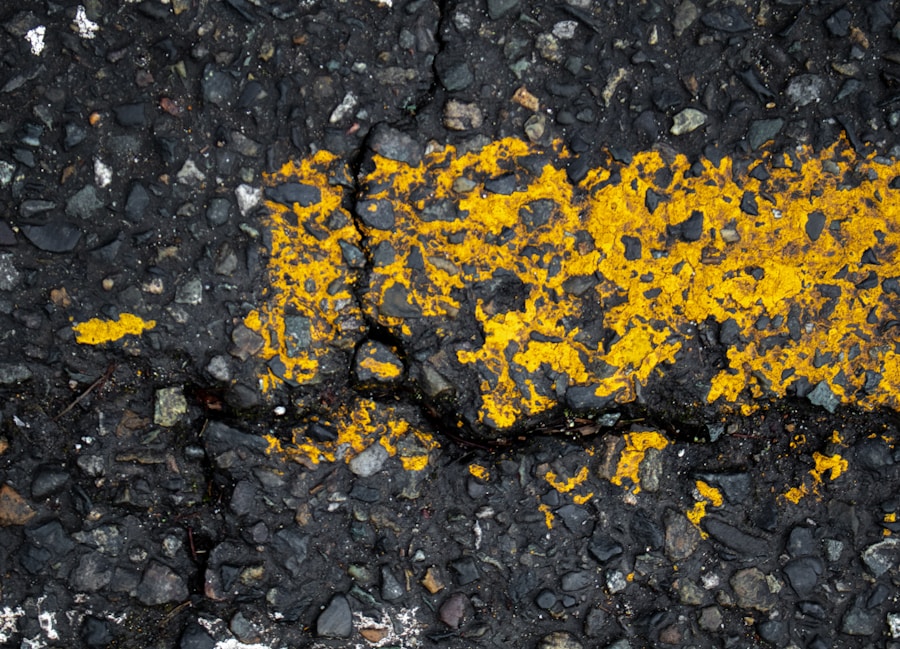Commercial parking lots are an essential component of any business or commercial property. They provide a safe and convenient place for customers, employees, and visitors to park their vehicles while conducting business. When it comes to choosing the right material for a commercial parking lot, asphalt and concrete are the two most popular options. Both materials have their own unique advantages and considerations, making them suitable for different types of commercial properties.
Asphalt is a popular choice for commercial parking lots due to its affordability, durability, and ease of installation. It is made from a mixture of aggregate, binder, and filler, which is then heated and compacted to create a smooth and durable surface. Asphalt is known for its ability to withstand heavy traffic and harsh weather conditions, making it an ideal choice for high-traffic commercial properties. On the other hand, concrete is a durable and long-lasting material that is known for its strength and resilience. It is made from a mixture of cement, water, and aggregate, which is then poured and cured to create a solid and stable surface. Concrete is a popular choice for commercial parking lots due to its low maintenance requirements and long-term durability.
Installation Process and Considerations
The installation process for asphalt and concrete parking lots varies significantly, with each material requiring different considerations and techniques. When it comes to asphalt parking lots, the installation process typically involves several key steps. First, the existing surface is prepared by removing any debris, vegetation, or old pavement. Next, a base layer of aggregate is laid down and compacted to create a stable foundation. The asphalt mixture is then heated and applied to the surface, followed by compaction to create a smooth and even finish. Finally, the surface is sealed to protect it from water damage and wear.
On the other hand, the installation process for concrete parking lots involves a different set of considerations. The existing surface is prepared in a similar manner, with debris and old pavement being removed to create a clean and stable base. The concrete mixture is then poured onto the surface and leveled to create a smooth and even finish. Once the concrete has cured, it is sealed to protect it from water damage and wear. It is important to note that the installation process for concrete parking lots can be more time-consuming and labor-intensive compared to asphalt, but the long-term durability and low maintenance requirements make it a popular choice for many commercial properties.
Long-Term Performance and Durability
When it comes to long-term performance and durability, both asphalt and concrete parking lots have their own unique advantages. Asphalt parking lots are known for their ability to withstand heavy traffic and harsh weather conditions. The flexible nature of asphalt allows it to expand and contract with changing temperatures, reducing the risk of cracking and damage. Additionally, asphalt parking lots can be easily repaired and resurfaced, extending their lifespan and reducing long-term maintenance costs.
On the other hand, concrete parking lots are known for their strength and resilience. Concrete is a rigid material that can withstand heavy loads and constant traffic without showing signs of wear or damage. Additionally, concrete parking lots have a longer lifespan compared to asphalt, with proper maintenance and care. While concrete parking lots may require less frequent repairs compared to asphalt, any damage or cracks that do occur can be more challenging and costly to repair.
Environmental Impact and Sustainability
The environmental impact and sustainability of asphalt and concrete parking lots are important considerations for many commercial property owners. Asphalt is considered a more sustainable option compared to concrete due to its ability to be recycled and reused. When old asphalt pavement is removed during repairs or resurfacing, it can be recycled and used in new pavement projects, reducing the need for new materials and minimizing waste. Additionally, the dark color of asphalt helps reduce heat absorption, lowering the urban heat island effect in commercial areas.
On the other hand, concrete has a higher environmental impact due to its production process, which requires large amounts of energy and raw materials. However, concrete parking lots have a longer lifespan compared to asphalt, reducing the need for frequent repairs and resurfacing. Additionally, advances in concrete technology have led to the development of more sustainable concrete mixtures that use recycled materials and produce lower carbon emissions during production.
Maintenance and Repair Strategies
Proper maintenance and repair strategies are essential for ensuring the longevity and performance of commercial parking lots. Asphalt parking lots require regular maintenance to prevent damage and deterioration. This includes routine inspections for cracks, potholes, and drainage issues, as well as regular sealcoating to protect the surface from water damage and wear. Additionally, any damage or deterioration should be promptly repaired to prevent further issues from developing.
Concrete parking lots also require regular maintenance to ensure their long-term durability. Routine inspections should be conducted to identify any cracks or damage that may require repair. Additionally, regular cleaning and sealing can help protect the surface from water damage and wear. While concrete parking lots may require less frequent repairs compared to asphalt, any damage or deterioration should be addressed promptly to prevent further issues from developing.
Cost Analysis and Return on Investment
When it comes to cost analysis and return on investment, both asphalt and concrete parking lots have their own unique considerations. Asphalt parking lots are generally more affordable compared to concrete, making them a popular choice for many commercial properties. The lower initial cost of asphalt can provide a quicker return on investment for property owners, especially for large parking areas that require significant upfront investment.
On the other hand, concrete parking lots have a higher initial cost compared to asphalt due to the materials and labor required for installation. However, the long-term durability and low maintenance requirements of concrete can provide a higher return on investment over time. With proper care and maintenance, concrete parking lots can last for decades without requiring major repairs or resurfacing, reducing long-term costs for property owners.
Future Trends and Innovations in Parking Lot Materials
As technology continues to advance, there are several future trends and innovations in parking lot materials that are worth considering for commercial property owners. One emerging trend is the use of permeable pavement materials, which allow water to pass through the surface and into the ground below. Permeable pavement can help reduce stormwater runoff and minimize the risk of flooding in commercial areas.
Another innovation in parking lot materials is the development of sustainable pavement mixtures that use recycled materials and produce lower carbon emissions during production. These sustainable pavement mixtures can help reduce the environmental impact of parking lot construction while providing long-term durability and performance.
In addition to new materials, advancements in technology have also led to the development of smart parking lot systems that use sensors and data analytics to optimize parking lot usage and improve traffic flow. These smart parking lot systems can help commercial property owners maximize their parking space while providing a better experience for customers and visitors.
In conclusion, choosing the right material for a commercial parking lot requires careful consideration of factors such as installation process, long-term performance, environmental impact, maintenance strategies, cost analysis, and future trends. Both asphalt and concrete have their own unique advantages and considerations, making them suitable for different types of commercial properties. As technology continues to advance, there are several future trends and innovations in parking lot materials that are worth considering for commercial property owners looking to optimize their parking lot investment while minimizing their environmental impact.

